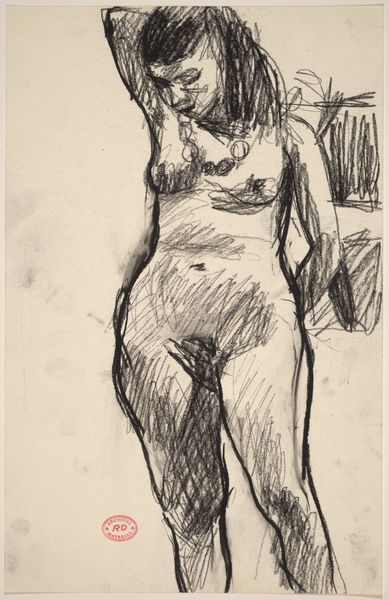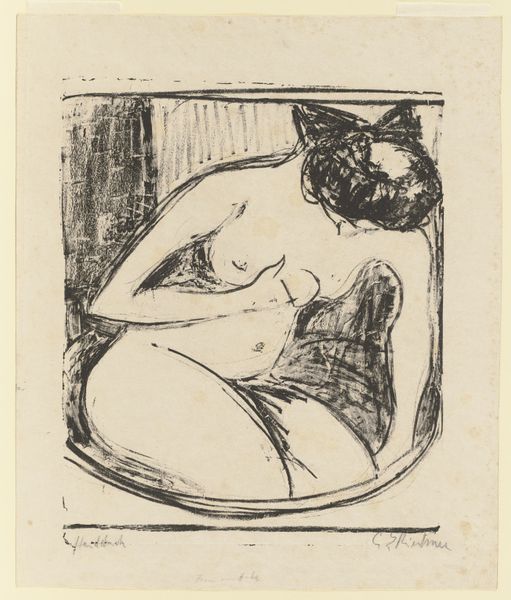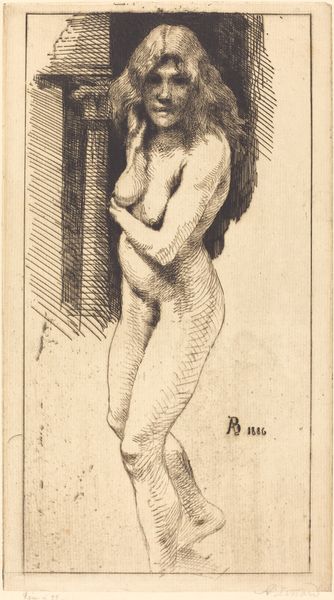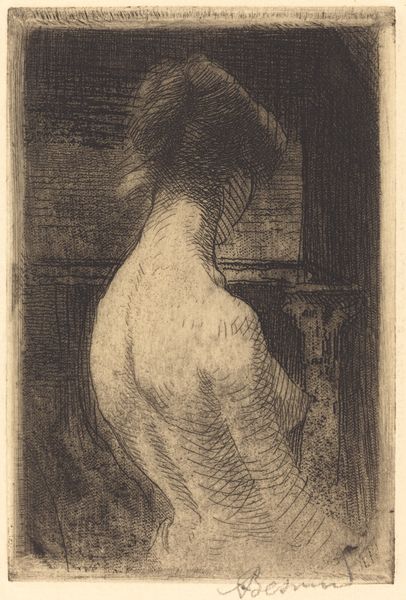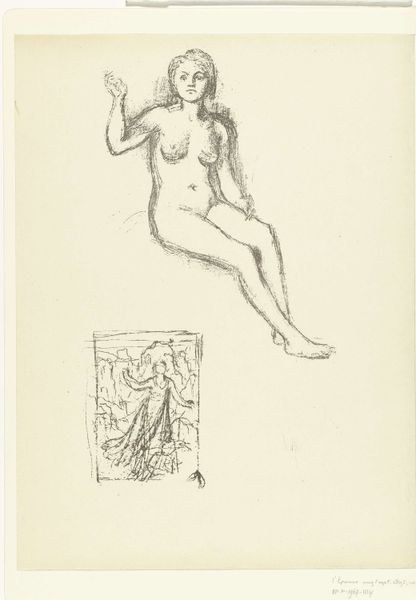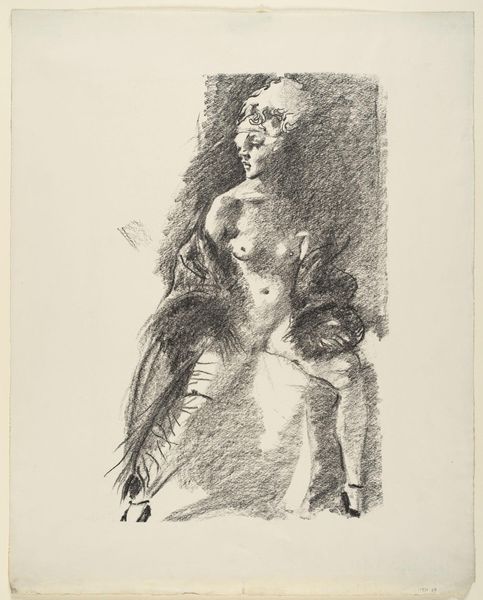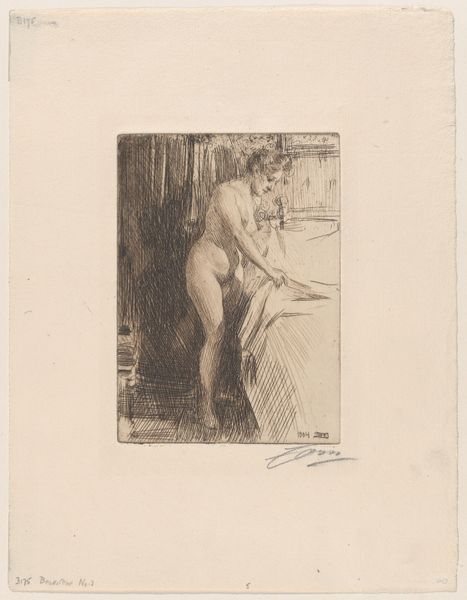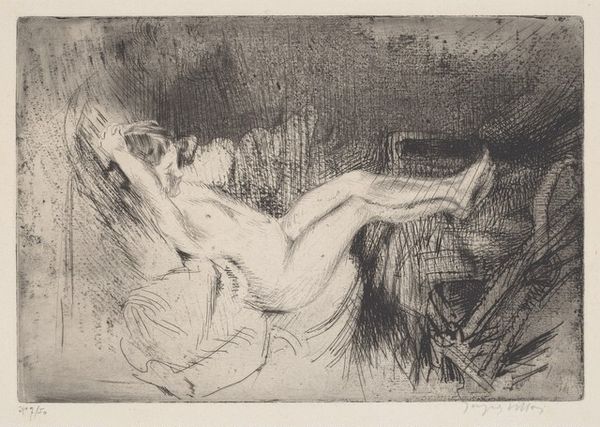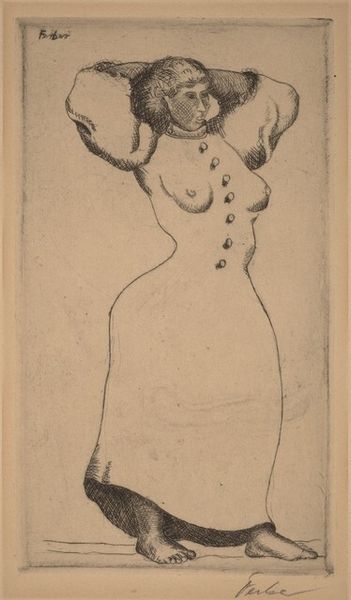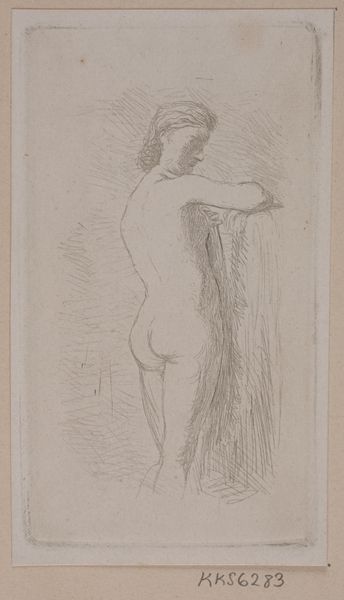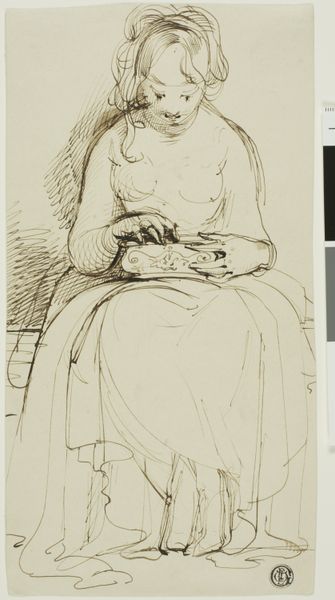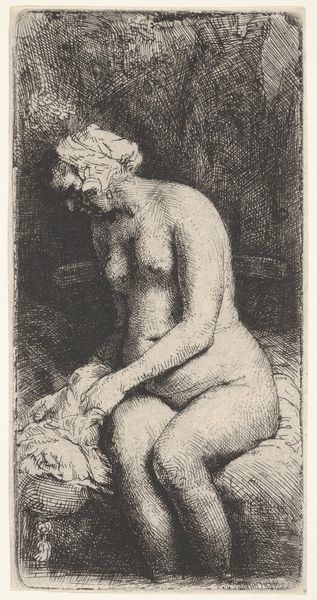
print, etching
# print
#
etching
#
pencil drawing
#
nude
#
realism
Dimensions: height 192 mm, width 123 mm
Copyright: Rijks Museum: Open Domain
Editor: This is Willem Adrianus Grondhout's 1933 etching, "Zittende, naakte vrouw," or "Seated, Nude Woman" here at the Rijksmuseum. It's a small, intimate piece, and the stark lines create a feeling of vulnerability. What strikes you about this work? Curator: Considering the date, 1933, this etching participates in a long history of representing the female nude, yet does so within the socio-political climate of the interwar period. Etchings, as a more accessible medium than painting, also had a wider circulation, democratizing the consumption of such imagery. Does this perhaps normalize such images or bring art to different publics? Editor: That's a really interesting point. So, in the context of mass media, how does it fit into discussions around female representation in art? Curator: Precisely. Consider how the 'male gaze,' as articulated by Laura Mulvey, traditionally frames the female nude. The woman is the object of the artist’s, and often the viewer’s, desire. Is Grondhout’s approach complicit in this? Or are there subtle choices - her gaze, the informality of the pose, the seeming lack of idealization - that subvert expectations? Editor: It does feel less about idealization, and more like a glimpse into a private moment. Almost documentary-like. Curator: Exactly. Think about how institutions, like the Rijksmuseum here, have historically acquired and displayed these images. What message does that convey about the acceptability or value of the subject matter? Do the figures of power and institutions add legitimacy? Editor: Wow, I never thought about it like that, almost as an endorsement. So, it seems the art's history continues even after the artist is done with it! Curator: Indeed. How an artwork functions as a cultural artifact can be influenced by curators, galleries, publications, and institutions like the museum itself. We, in essence, control the legacy through our collection and exhibition choices. Editor: I’ll definitely view art in museums differently now, understanding the layers of interpretation and history. Thanks so much! Curator: It was my pleasure! Examining these power dynamics within the art world is always rewarding and necessary.
Comments
No comments
Be the first to comment and join the conversation on the ultimate creative platform.
